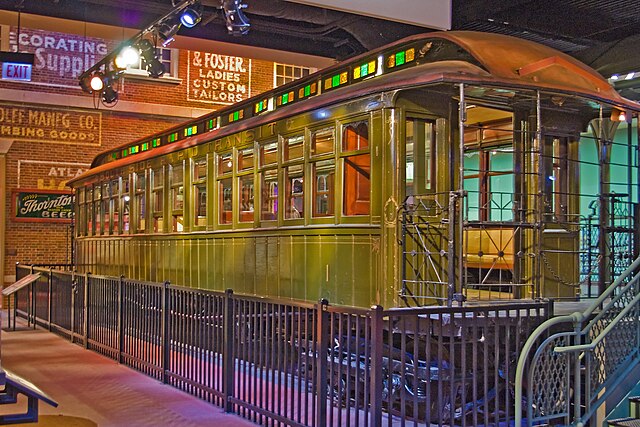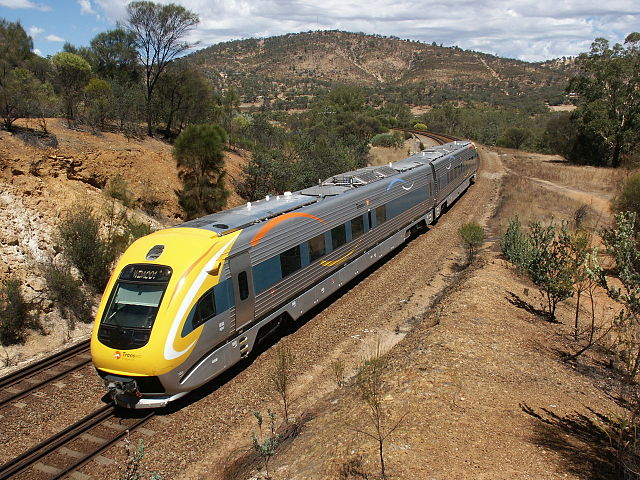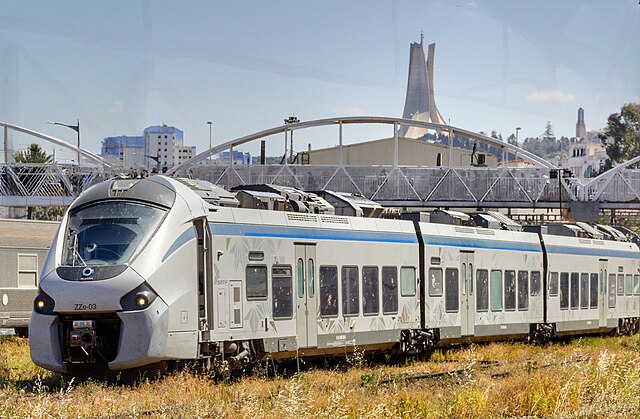Multiple-unit train control
Multiple-unit train control, sometimes abbreviated to multiple-unit or MU, is a method of simultaneously controlling all the traction equipment in a train from a single location—whether it is a multiple unit comprising a number of self-powered passenger cars or a set of locomotives—with only a control signal transmitted to each unit. This contrasts with arrangements where electric motors in different units are connected directly to the power supply switched by a single control mechanism, thus requiring the full traction power to be transmitted through the train.
Two ICE 2 trains operating in multiple-unit train control in Bielefeld, Germany
South Side Elevated Railroad car #1, one of the cars that Frank Sprague converted to MU operation in Chicago
Two Japanese Shinkansen trains operating in multiple-unit train control
Two ZiU-9 trolleybuses operating in multiple-unit control in Leningrad, USSR
A multiple-unit train or simply multiple unit (MU) is a self-propelled train composed of one or more carriages joined, which when coupled to another multiple unit can be controlled by a single driver, with multiple-unit train control.
A Deutsche Bahn ICE 3 EMU capable of up to 320 km/h (199 mph) in Rhineland-Palatinate, Germany
The Transwa Prospector DEMU is capable of speeds up to 200 km/h (124 mph), and provides a passenger service between Perth and the mining town of Kalgoorlie in Australia.
South Side Elevated Railroad car #1—one of the cars that Frank Sprague converted to MU operation in Chicago
A Coradia ZZe trainset from SNTF at Agha Station







